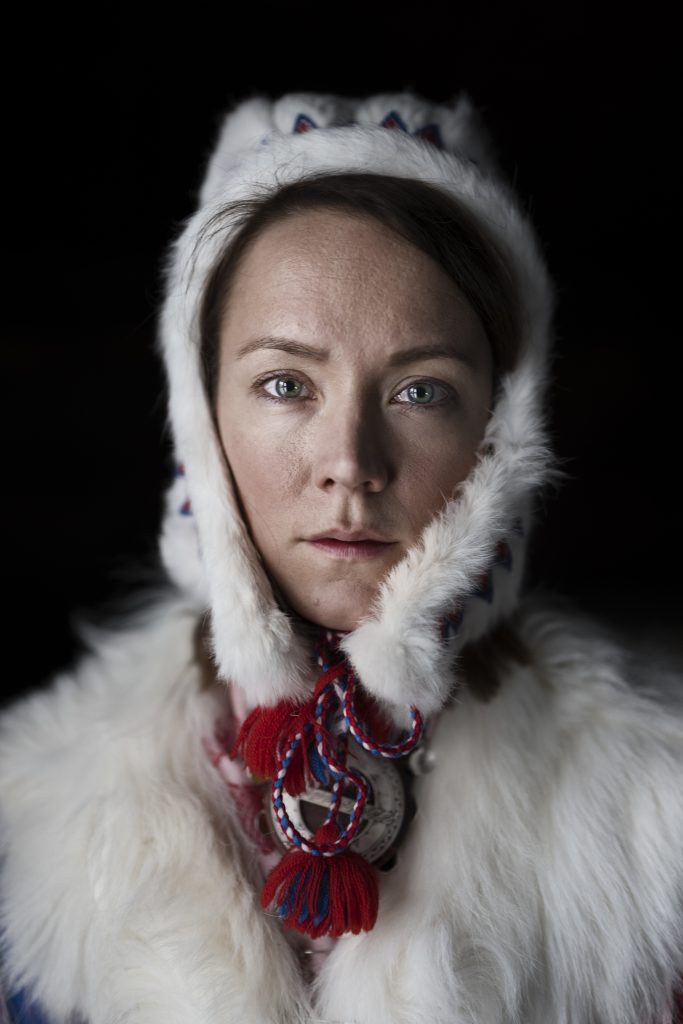Jarle Hagen, a Norwegian photographer, had the opportunity to immerse himself in the Sami culture, an indigenous Finno-Ugric people inhabiting the Arctic area of Sápmi, which today encompasses parts of far northern Norway, Sweden, Finland, and the Kola Peninsula of Russia. Fortunately for us, he was stuck for a while due to the harsh weather conditions. The otherworldly imagery that resulted from this is beautiful, as can be judged by the video and photos below, taken with the Leica Summilux-SL 50 mm f/1.4 ASPH.
Jarle decided to focus more on shooting the traditional side of the Sami people and their culture. They have endured a long and hard history of ill-natured relations with the Norwegians but are now a respected and proud people. This was a long and hard struggle, but things improved towards the end of the 1980s. The story of the foundation of Norway is based on various legends or sagas. An important saga narrative that was overlooked in the 1800s deals with the Sami’s role in the unification of Norway: The Norwegian Viking Harald Hårfagre married Sami King Svåse’s daughter Snøfrid. Through this marriage alliance Snøfrid became one of the ancestors of the Norwegian royal family. The legend’s portrayal of the alliance and the royal ancestry was not part of the country’s saga-based narrative, which laid the foundations for the creation of Norway in the 1800s.
In Norway, the Sami have their own parliament, which promotes political initiatives and manages missions and laws delegated to them by national authorities. As with many indigenous peoples, the Sami in Norway have suffered a past dominated by discrimination, particularly regarding their religious beliefs and language. According to education laws from the end of the 19th Century, all schooling was to be taught in Norwegian, a policy which remained in place until the Second World War.
Today, the situation is much improved, but far from ideal. The Sami experience a great deal more discrimination than ethnic Norwegians according to a new study. Furthermore, their language is severely threatened and the issue of land rights is also pressing.
Over a hundred years ago, missionaries would destroy drums and female Sami hats because they thought that the devil resided within, while priests forced the Sami people to convert to Christianity. After that period, the Norwegian government wanted all Sami to become Norwegian. Even today the Norwegian government treats the reindeer herders and the Sami people in a harsh manner. They look to remove the reindeer herders’ grazing rights, in favor of mining projects and the provision of power lines.
Elle Marja Eira

Elle Marja Eira is a poetic and political, multi-talented artist, who works with film and music. Her music can be categorized as contemporary pop, heavily influenced by the world she comes from. Arctic, electronic music colored by traditional Sami music. She is from Kautokeino, the Northern part of Norway.
Eira tells the stories of her family heritage as reindeer herders through music, and has directed and produced music videos, short films and television series. She has played concerts in the Nordic region, and international stages in Canada, Russia, Germany, Switzerland, Finland, Sweden, Guatemala, Brazil, France and China.
Elle Marja Eira performed vocals and Yoik on a piece of music composed by Morten Hyld Pettersen. They mixed the music amidst the tundra of Kautokeino and adapted it to accompany a film made by Andreas Ausland. Yoik is the traditional Sami way of singing. You can Yoik people, places, water, mountains and animals.
The photo series with Elle Marja is a great example of the uniqueness of the Leica Summilux-SL 50 mm f/1.4 ASPH. The full-length portrait with the turquoise wrap over her shoulders, shows the incredibly detailed focus in the skin and jewelry, combined with the absolutely beautiful bokeh the lens produces in the out-of-focus areas.
The experience: NATURE AND the Leica SL
“What fascinated me most about the Sami people is their pride and way of life. Their best-known means of livelihood is semi-nomadic reindeer herding. And this way of living demands close contact with nature. A natural and fresh lifestyle, that even the most hardcore modern yoga enthusiast or mindful person would not even get close to.”
“Since I had two SL cameras and lenses, the film is shot only with the SL camera and a Leica Summilux-SL 50 mm f/1.4 ASPH lens as well. When I shot these images, we only had about 1-2 hours of sunlight a day. So I had to move quickly to capture what I wanted to with the ambient light I had available.”
Jarle uses Bron Paras. He mentions that lately he has also used an Elinchrome Octa light bank with indirect light. It provides beautiful, even and soft light.
To find out more about Jarle Hagen, please visit his website, while you can also see more of his photos on his Instagram.
The music in the film is by Elle Marja Eira and Morten Pettersen. The film is shot and edited by Andreas Ausland. PEAK VISION MEDIA.












Comments (11)